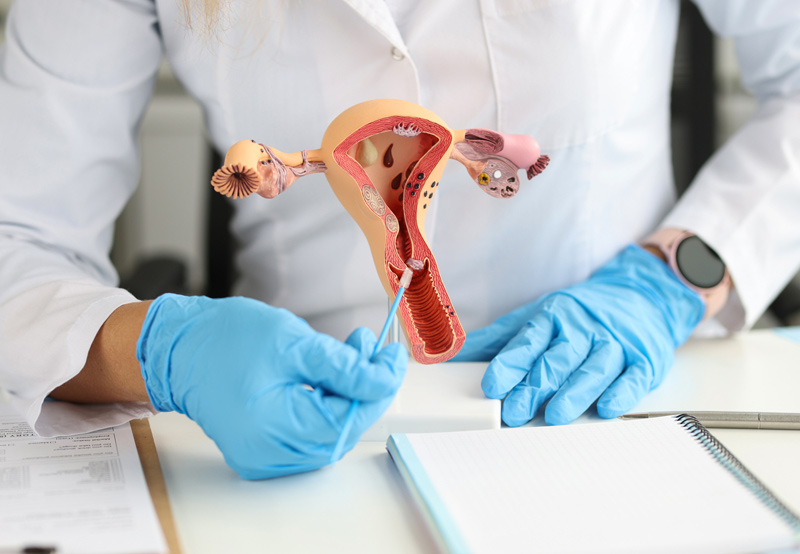

Robotic sacrocolpopexy is a procedure done to treat uterine prolapse or vaginal vault prolapse in women who have undergone a hysterectomy.
About the Procedure
If the upper support of the vagina weakens, the uterus and cervix may drop into the vaginal canal. A hysterectomy may also lead to vaginal vault prolapse, which is when the top of the vagina drops into the vaginal canal. In both cases, women may feel pressure and a bulge at the opening of the vagina.

Risks of Surgery
The success rate of sacrocolpopexy is greater than 80 percent, however, the risks include bladder or urinary infections, skin infections caused by incisions made during surgery, slow return of normal bowel function, blood clot formation in the legs or lungs, pelvic pain, changes in urination or bowel movements, injury to nearby organs, exposure of the mesh in the vagina. In rare cases, women may need a blood transfusion.
What to Expect During Surgery
The patient will be placed under general anesthesia and the surgeon will use a surgical robot to perform small incisions. A catheter will be placed in the bladder once the patient is asleep.
The surgeon will proceed to separate the vaginal walls from the bladder and rectum. Next, she will attach a Y-shaped piece of permanent mesh to both the front and back walls of the vagina and the top of the vagina.
The mesh will be suspended to a ligament running down the front of the sacrum, which is located near the tailbone at the base of the spine. The surgeon will make sutures to keep the mesh in place and to restore the vagina to its normal position. The mesh also helps support the bladder and bowels. The surgeon will finish the procedure by covering the mesh with a layer of tissue and closing the abdominal incisions.
The mesh used during a sacrocolpopexy is permanent and made of a material called polypropylene. The risk of mesh complications is low because it wasn’t placed through the vaginal opening to treat the prolapse.
The Recovery Process
After surgery, the patient will remain in the recovery room for a few hours. Upon awakening, they will have a catheter in their bladder and may have gauze material in the vagina. Before being discharged, the patient will undergo testing to see if the bladder can empty on its own. The gauze will also be removed. About 50% of women who undergo sacrocolpopexy have difficulty emptying their bladder immediately after surgery. However, this is temporary.
Patients may need to go home with a catheter and use it intermittently or continuously. A nurse will show patients how to use the catheter, but patients should speak to their surgeon to find out when they can stop using the catheter.
Patients who undergo robotic sacrocolpopexy may go home the next morning or the same day.
It’s important to avoid heavy lifting, high-impact activities, swimming, spa baths, and sexual intercourse until their doctor gives them the all-clear. Patients can engage in light activities, such as walking, and should avoid staying in bed all day.

